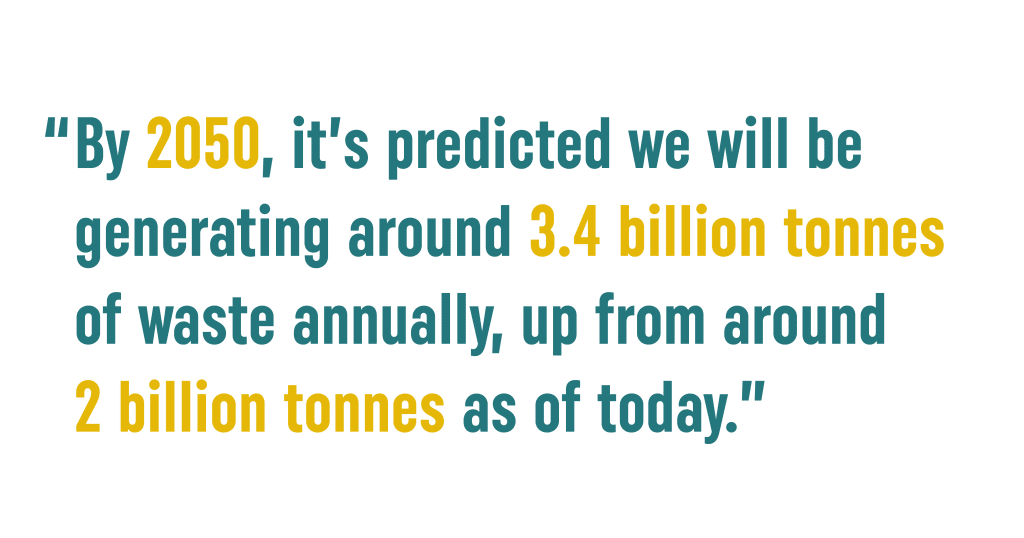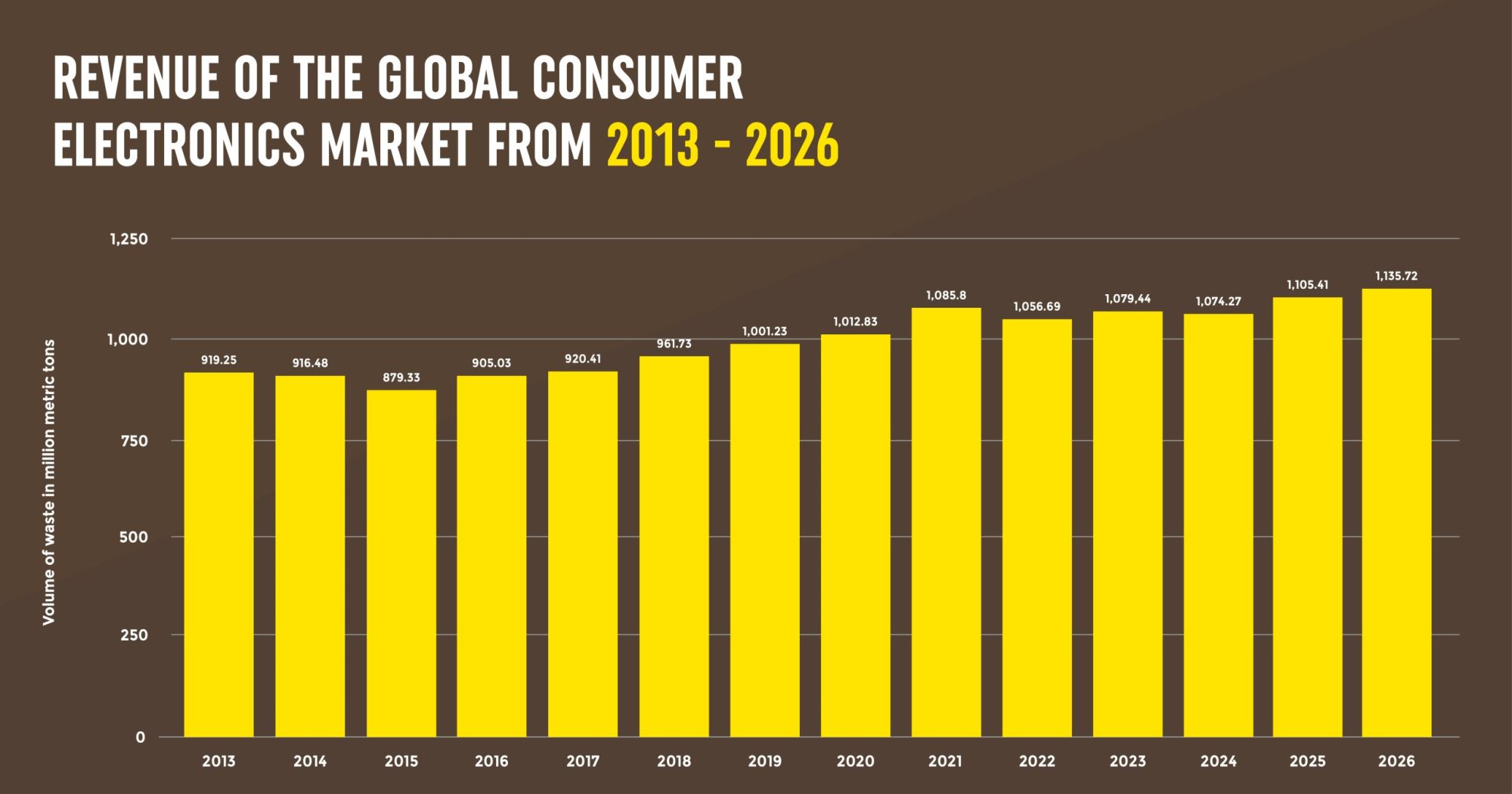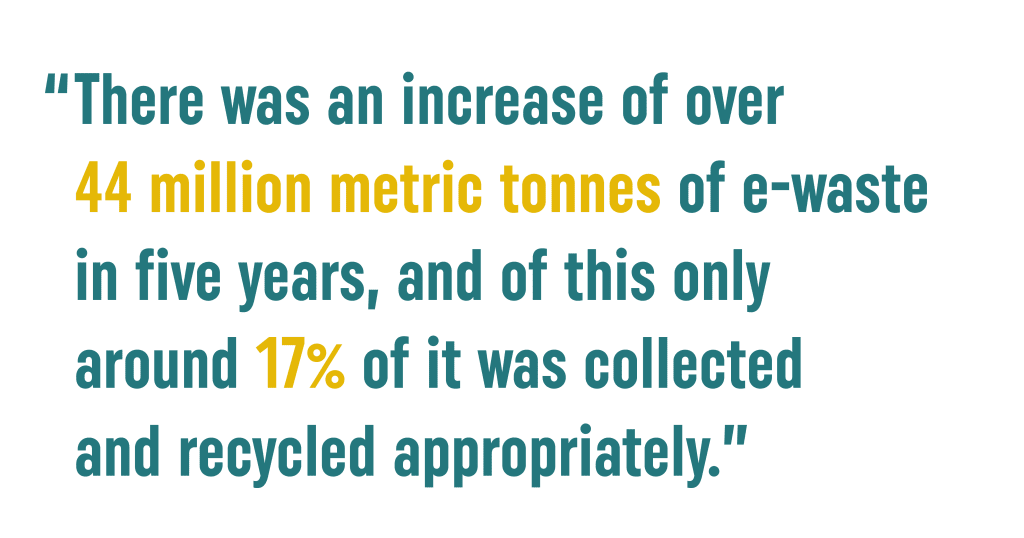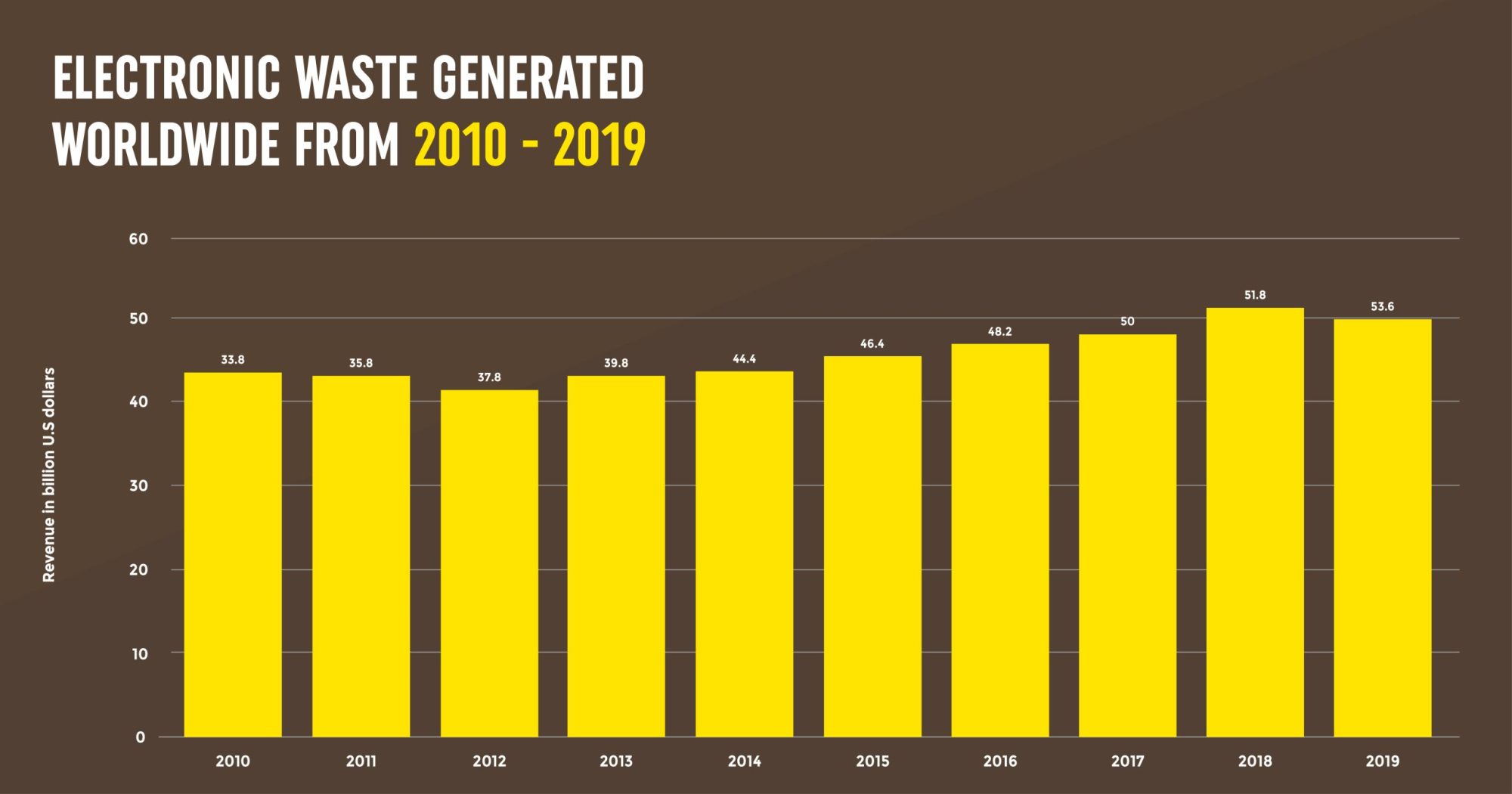
The Rise of E-waste
The fact that waste generation is on the rise globally is unignorable. By 2050, it’s predicted we will be generating around 3.4 billion tonnes of waste annually, up from around 2 billion tonnes as of today.

However, what’s perhaps even more alarming is the speed at which electronic waste alone is rising. According to Statista’s Consumer Market Outlook, by 2026, the global consumer electronic market will be worth over $1.1 trillion, a figure that has been rising steadily since 2015 and shows no signs of stopping. Over 1.5 billion smartphones are bought and sold each year alone, and only a fraction of them will be collected and recycled properly.
In what follows, the Brown Recycling team will be taking a look at the rise of electronic waste – or e-waste as it’s commonly known – in greater detail, and looking at ways to combat its harmful effects.

What is e-waste?
We can understand e-waste as anything with a plug, a cord or electrical components. Here are a few common e-waste items: mobile phones, laptops, television and kitchen appliances. E-waste encompasses a huge range of product categories simply because so much of what we use today is electrical in nature.
What’s so dangerous about e-waste?
While all waste in landfill can cause harm to the environment, e-waste is particularly dangerous due to the number of different toxic chemicals that these products can produce. These toxic chemicals can then leach into the soil below which contaminates local water supplies.
A further compounding problem is that e-waste is often exported to less developed countries where archaic and dangerous recycling methods are utilised, such as acid leaching and cable burning, which can cause the release of hazardous hydrocarbons and other byproducts which can impact local communities.
E-waste by the numbers
According to United Nations University, in 2010, 34 million metric tonnes of e-waste was produced worldwide. This figure consistently increased all the way up to 2019, when nearly 54 million metric tonnes of e-waste was produced. There was an increase of over 44 million metric tonnes of e-waste in five years, and of this only around 17% of it was collected and recycled appropriately. Perhaps even more frightening, this figure of 54 million could more than double to 120 million by 2050 if we don’t take action right now.

In terms of e-waste by region, Asia generates the largest volume of waste. In 2019, Asia produced nearly 25 million metric tonnes of e-waste, which is almost twice the amount of the Americas, the second highest generator. Unfortunately, of the amount produced, less than 12% of it was collected and appropriately recycled.

What’s causing the rise in e-waste
- Population boom: one of the main things that’s causing the rise in e-waste is also causing the rise in general waste: the population boom. According to the UN, the world’s population is set to increase by another 2 billion people in the next 30 years, up to nearly 10 billion.

- Short innovation cycles: Another important factor that’s influencing the speed at which e-waste is being generated is the short innovation cycles between product updates and new iterations. For example, the new iPhone tends to come out on a yearly cycle, but the usability of an iPhone can be up to a decade or more if it’s properly looked after.
- Social forces: When it comes to tech and gadgets, having the latest model or product carries social value in certain circles and peer groups, so we’re motivated to keep upgrading despite not needing to. In fact, tech is so ingrained in our lives at this point that the brands we choose are often extensions of our personalities.
- Linear production model: One of the big problems surrounding tech is the produce, use, dump model that’s currently in place. The gadgets that we buy and use are built to last a number of years, but there isn’t a plan in place for when these products reach the end of their usable life or become obsolete. If a rigid collection system was put in place, the materials used to create old tech could be recaptured and used again to create new products in a circular fashion.
What can we as consumers do to help fight the rise in e-waste?
- Upgrade items only when you absolutely need to: It’s easy to convince ourselves that we need a new phone or we need a new laptop, but if we think about it long and hard, it’s rarely the case. Phones and laptops from top brands are often so reliable that they can keep functioning serviceably for over a decade, so the onus is on us to resist the urge to upgrade when the next new, shiny model comes along.
- Embrace the repair and maintenance culture: Repair and maintenance isn’t exactly a new concept when it comes to electrical items and gadgets, but it’s certainly seeing a surge in popularity lately due to the problem of e-waste. The fact is that repair and maintenance services are often ignored by consumers because we’d rather use a faulty device as an excuse to upgrade. However, if we embraced these services, we could all hold on to our gadgets for twice as long.
- Don’t listen to fearmongering: Unfortunately, there’s a lot of information out there suggesting that even hard factory resets won’t fully eradicate your personal data from old devices, leaving many people too scared to sell or give away or hand in their old tech without trying to destroy it first. However, there are many reputable e-waste recycling points that you can rely on, just make sure that you do your research on them before handing over your device.
- Utilise trade-in and recycling services: These days, there’s a huge number of different trade-in and recycling services for e-waste. Apple, for example, has programmes operating in many different countries where you get money off your next purchase by handing in your old device, or an Apple gift card if you’d prefer. Microsoft has also started to establish similar programmes, so you can recycle your old tech no matter which camp you’re in!
Brown Recycling is a leading waste management company in Stoke-on-Trent. We help companies of all sizes throughout the region stay on top of their waste by carrying out a thorough audit and providing a bespoke waste management solution that works for them. As hazardous waste specialists, we understand the gravity of the burgeoning e-waste problem, which is why we wanted to do our bit to educate people about it as much as possible.
If you would like to discuss e-waste or WEEE recycling with us, please don’t hesitate to give us a call.
This website uses cookies to enhance your browsing experience and deliver personalised ads. By clicking “Accept All Cookies”, you agree to the storing of cookies on your device to enhance site navigation, analyse site usage, and assist in our marketing efforts.

